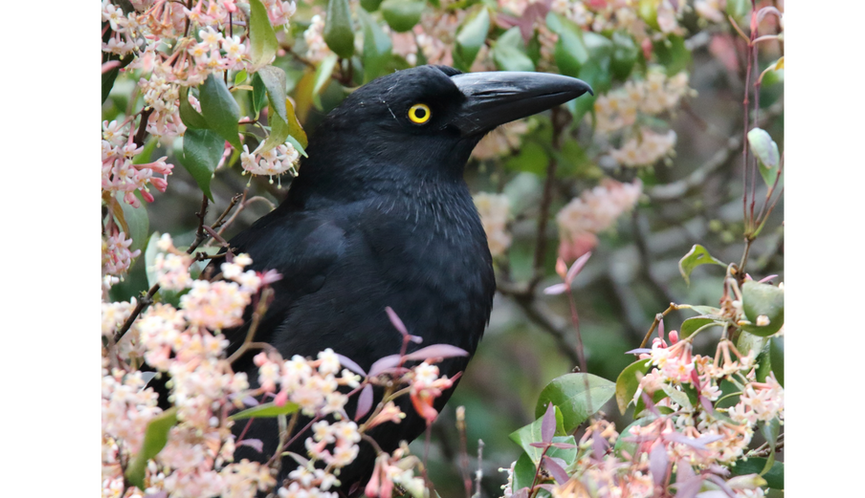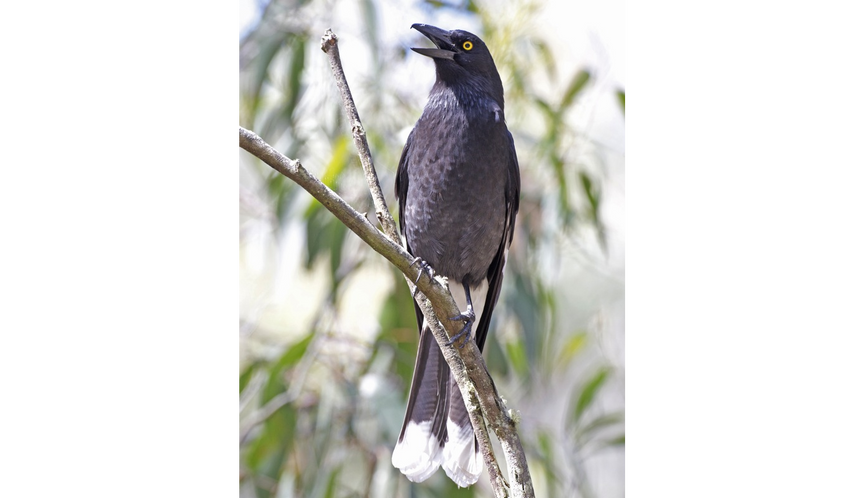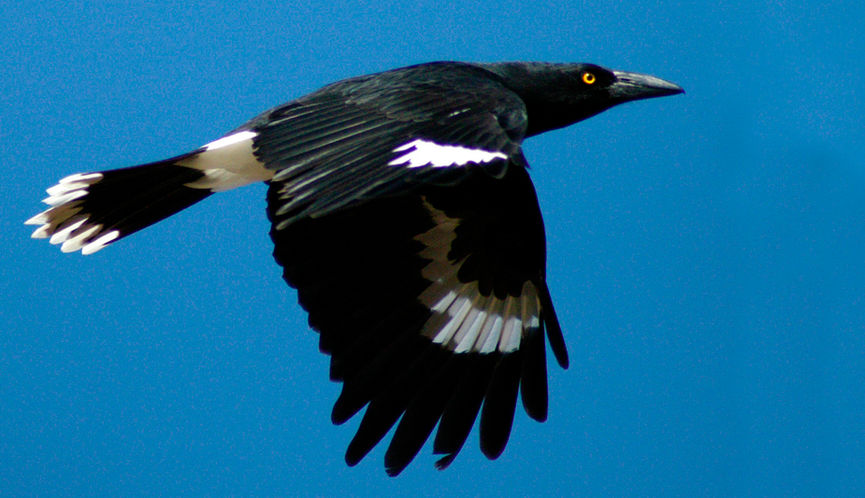Pied Currawong
Strepera graculina
Quick facts
Other names: Chillawong, Tullawong, Bell Magpie.
Size: Slightly larger than Magpie.
Range and lifestyle: Resident in eastern Australia, where they occupy large territories.
Food: Fruit, insects, birds and their eggs, lizards and rodents.
Breeding: Spring and early summer. Nest is an untidy bowl of sticks, high in tree. Eggs, usually 3, pale brown with faint darker spots and blotches. Mum incubates for 3 weeks, but the male feeds her, and both feed the chicks for another month.
Predominantly black plumage, a sleek body with a long pointed black bill, and glaring yellow eyes set the Pied Currawong apart from the closely-related Magpie and Pied Butcherbird. Unlike the latter birds, the Currawong often forms large flocks, and in some parts of their range these birds migrate from the highlands to the lowlands in the autumn and winter. Unlike Magpies, they spend most of their time in trees, but when on the ground, run or hop with their tail half-cocked. Their distinctive undulating flight consists of slow, rowing or looping wing movements, sometimes followed by short descents with wings almost closed.
The word ‘currawong’ is believed to have come from the Jagera people who owned the land now occupied by Brisbane, but it also clearly resembles the sound of a common call of this bird “curra-wong, curra-wong”, though sometimes more like “currah-currah-currong”. Another common call is a drawn-out “sing, song, saang”, rising and falling and rising again, similar in sound to a whistle given by humans. When in large flocks, currawongs give a medley of calls, and with so many calling at one time, can be extremely noisy, especially in the late afternoon.
The Pied Currawong is a true omnivore, and its diet changes with the seasons. It is well known for its habit of robbing the nests of smaller birds, mainly in spring, when it takes both eggs and chicks, but it also kills many adult birds. This can be a problem for small birds in urban and rural areas where currawong numbers have increased above historic levels, due to alteration of habitats by humans. In fact, when scientists removed currawongs from one reserve surrounded by farmland, the smaller species benefitted because they didn’t lose so many of their eggs. In Brisbane, currawong numbers grew significantly during the 20 years between 1980 and 2000, when they also became more widespread, partly due to the expansion of suburbs.
In summer, currawongs eat lots of insects and other invertebrates, whereas in autumn and winter they mainly eat berries and other fruit. Before Europeans arrived in the region where Brisbane is now, the birds would have obtained fruit from the extensive rainforests, but since then, much of the rainforest was chopped down for timber, and currawongs started taking advantage of fruit trees planted by people. Many were shot in the past because they were considered pests, but nowadays growers use nets to protect their orchards.
Text © Richard Noske 2018 CC BY-NC-SA













